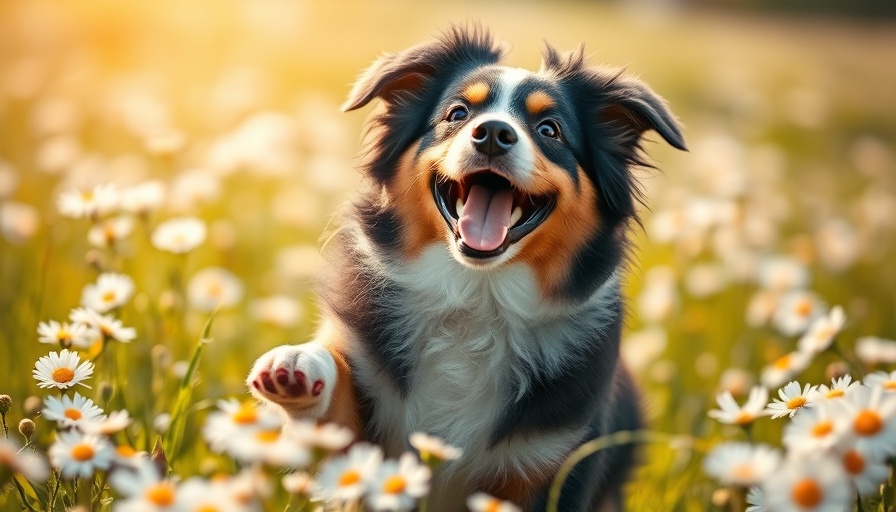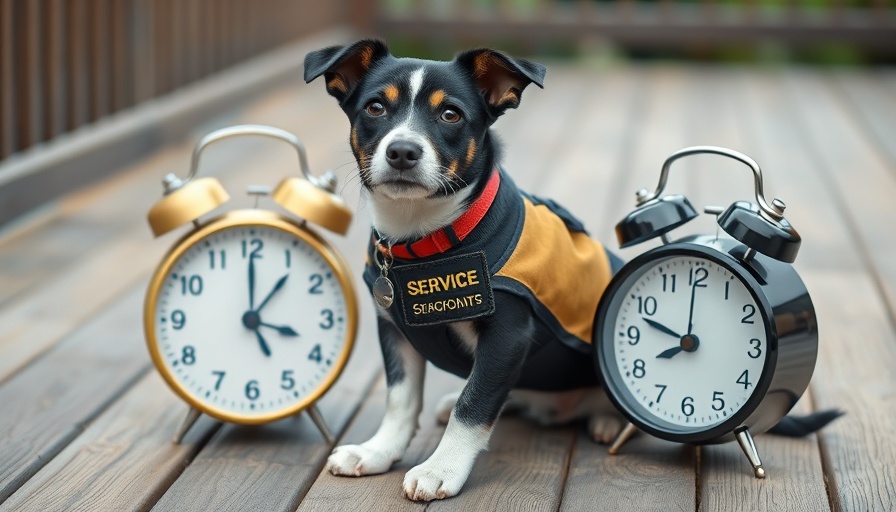
Spring is Here: Celebrate with Caution
As the warmth of spring envelops us, many dog owners eagerly embrace the season of outdoor adventures with their furry companions. While this time of year promises longer walks and playful days in parks, it's essential to keep springtime safety in mind to protect our beloved pets. With new hazards emerging, understanding how to navigate these risks is vital for a happy and healthy spring.
The Importance of Car Safety
With spring breezes inviting more outings, ensuring proper car safety for your dog becomes paramount. As adorable as it may be to see your dog with their head out the window, posing your pet to potential injuries is never worth the thrill. Always secure your pet in a crate or with a specialized seatbelt harness designed for dogs during car rides. Additionally, some dogs may even benefit from a non-slip seat cover to make the ride more enjoyable and safe.
Watch Out for Season Hazards: Chemicals and Pests
As we engage in the traditional spring cleaning ritual, keep harmful chemicals stored safely away from pets. Many cleaning products, even those marketed as safe or natural, can be toxic if ingested or inhaled by your dog. Make it a habit to read labels and store supplies securely out of your pet's reach.
In addition to cleaning supplies, the appearance of fleas and ticks is a common concern as the weather warms. These pesky parasites can wreak havoc on your pet's health. Be proactive by consulting your veterinarian about year-round preventive medications.
Seeds, Plants, and Your Pet's Well-Being
Springtime gardening is another area where pet safety is crucial. Fertilizers, pesticides, and even some plants can pose significant risks. Many common spring plants, such as azaleas and lilies, are toxic to pets. It's essential to familiarize yourself with which plants are safe and which should be avoided completely. The ASPCA provides a comprehensive list of toxic and non-toxic plants to assist you.
Keeping Your Pet Hydrated
As temperatures rise, staying hydrated becomes critical. Always carry a portable water bowl and offer your dog fresh water regularly during outings. Be wary of outdoor activities in extreme heat, as dogs can suffer from heatstroke quickly. Dogs exhibit signs of agony, such as excessive panting or drooling, when experiencing heat-related stress.
Identifying Allergies This Spring
Just like humans, dogs can develop allergies to pollen, dust, and other environmental triggers during spring. Symptoms often include itchy skin, sneezing, and lethargy. It is always a good practice to consult with your veterinarian at the onset of these symptoms.
Prepare for Water Activities
If your dog enjoys swimming or any water activities, supervision is crucial. Not all dogs are natural swimmers, and accidents can occur quickly around pools or lakes. Invest in a pet flotation device if you plan to take your dog to the beach or out on a boat.
Looking Ahead: Set Your Dog Up for a Safe Spring
The joys of spring outings and activities with your furry friend are numerous, but remaining vigilant about their safety is what truly ensures a fulfilling experience. By taking precautions against environmental toxins, heat exposure, and allergens, you can enjoy the season to its fullest without sacrificing your pet's well-being.
Your Action Plan for Pet Health
Neglecting these spring safety measures can have dire consequences for your beloved pet. As a dog owner, it's up to you to create a safe environment while enjoying all that this vibrant season has to offer. Implement these tips today and ensure your furry friend has a fun and safe spring!
For more information and a deeper dive into ensuring your pet's safety this spring, check out local resources like the ASPCA and your veterinarian for tailored advice.
 Add Row
Add Row  Add
Add 




 Add Row
Add Row  Add
Add 

Write A Comment